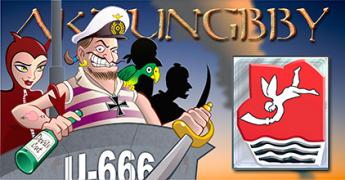 07-17-16, 02:25 AM
07-17-16, 02:25 AM
|
#39
|
|
Gefallen Engel U-666
Join Date: Jul 2013
Location: On a tilted, overheated, overpopulated spinning mudball on Collision course with Andromeda Galaxy
Posts: 27,862
Downloads: 22
Uploads: 0
|
 BB: 61,64,63,62
BB: 61,64,63,62
 https://www.flickr.com/photos/konabish/6497548649/ <to enlarge) All four Iowa-class battleships steaming together (1954). Ship closest to the camera is USS Iowa (BB-61). The others are (from near to far): USS Wisconsin (BB-64), USS Missouri (BB-63) and USS New Jersey (BB-62). This was the only occasion that all four Iowa Class BB's were steaming in formation. Arguably; two years later...the most powerful surface armada the world ever saw. https://www.flickr.com/photos/konabish/6497548649/ <to enlarge) All four Iowa-class battleships steaming together (1954). Ship closest to the camera is USS Iowa (BB-61). The others are (from near to far): USS Wisconsin (BB-64), USS Missouri (BB-63) and USS New Jersey (BB-62). This was the only occasion that all four Iowa Class BB's were steaming in formation. Arguably; two years later...the most powerful surface armada the world ever saw.
Quote:
The final type of ammunition developed for the Iowa class were Katie" shells. These shells were born from the concept of nuclear deterrence that had begun to shape the United States armed forces as the Cold War began. To compete with the Air Force and Army, which had developed nuclear bombs and nuclear shells for use on the battlefield, the US Navy began a top-secret program to develop Mk. 23 nuclear naval shells with an estimated yield of 15 to 20 kilotons.These shells were designed to be launched from the best seaborne artillery platform available, which at the time were the four ships of the Iowa class. The shells entered development around 1953, and were reportedly ready by 1956; however, it is not known whether they were ever actually deployed on the Iowa-class battleships because the US Navy does not confirm or deny the presence of nuclear weapons aboard its ships. In 1991 the US unilaterally withdrew its nuclear artillery shells from service, and Russia responded in kind in 1992. The US removed around 1,300 nuclear shells from Europe and reportedly dismantled its last shells by 2003. This in theory would give each Iowa class Battleship capable of delivering 135-180 kilotons worth of explosives in one salvo. An unique capability that would have proved decisive in any conflict on sea or on land. The nuclear tests with the Mk-9 (11in Army shell) had the shell detonated as an aerial burst. The nuclear tests at the ABLE detonation showed an air burst detonation did little structural damage to battleships. It is unknown if the Mk-23 was designed to detonate on impact or under water which would most likely cause an explosion much like the BAKER nuclear test that caused considerably more damaged to the test fleet. Even with a single air burst detonation a Mk 23, it would have damaged or destroyed much of the enemy battleship fragile equipment it would need to fight if they survived the explosion. Thus leaving for any of the Iowa's easy pickings with their conventional 16in shells. This in theory would give each Iowa class Battleship capable of delivering 135-180 kilotons worth of explosives in one salvo. An unique capability that would have proved decisive in any conflict on sea or on land. The nuclear tests with the Mk-9 (11in Army shell) had the shell detonated as an aerial burst. The nuclear tests at the ABLE detonation showed an air burst detonation did little structural damage to battleships. It is unknown if the Mk-23 was designed to detonate on impact or under water which would most likely cause an explosion much like the BAKER nuclear test that caused considerably more damaged to the test fleet. Even with a single air burst detonation a Mk 23, it would have damaged or destroyed much of the enemy battleship fragile equipment it would need to fight if they survived the explosion. Thus leaving for any of the Iowa's easy pickings with their conventional 16in shells.
|
__________________

"Only two things are infinite; The Universe and human squirrelyness; and I'm not too sure about the Universe"
|

|

|